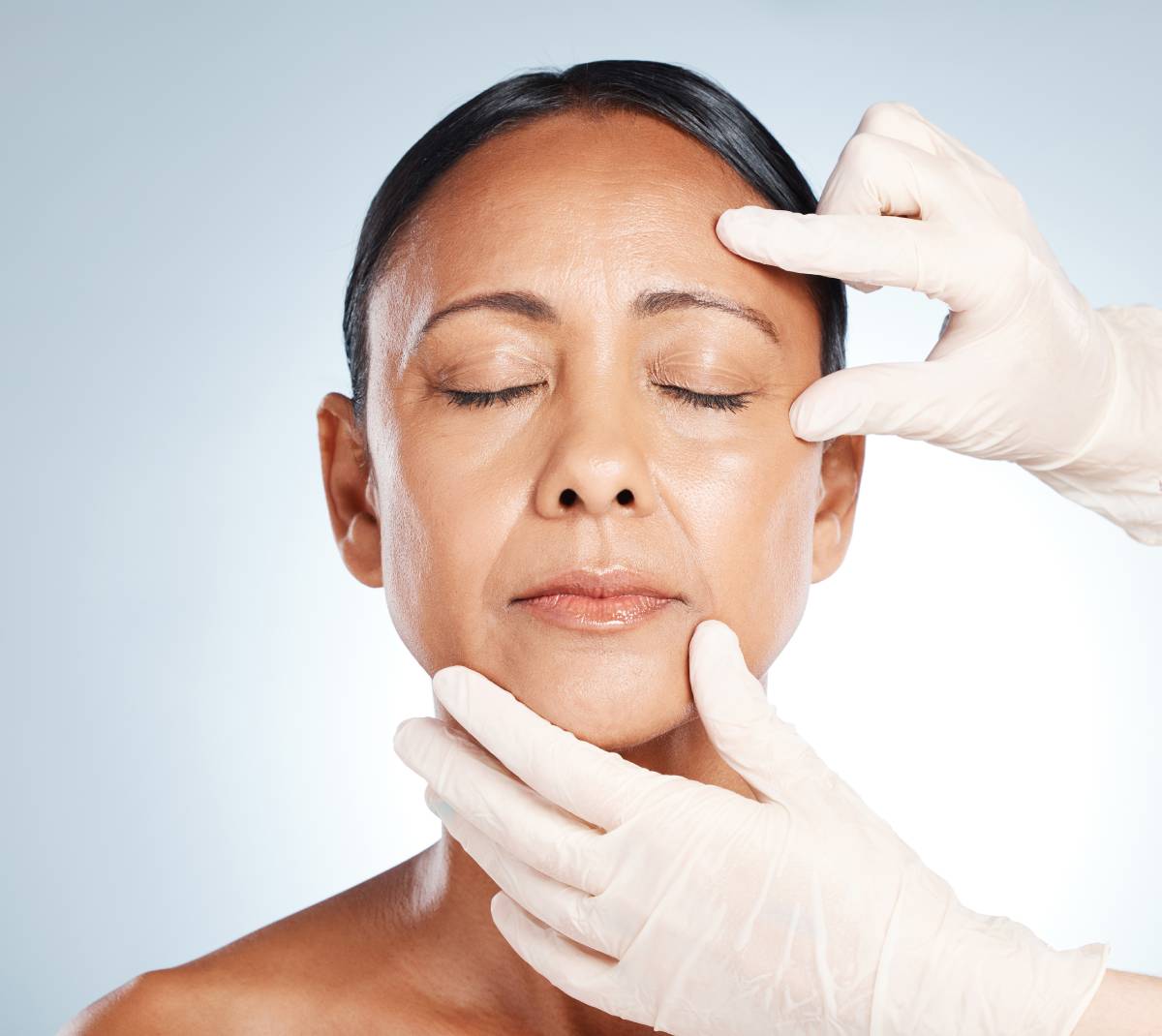Facial enhancement through fat transfer has become increasingly popular as individuals seek natural-looking alternatives to synthetic fillers. The procedure involves harvesting fat from one area of your body and injecting it into your face to restore volume and reduce signs of aging. You may wonder, how much fat is needed for facial fat grafting?
A facial fat grafting surgeon carefully plans each procedure based on individual needs and personal goals. The amount of fat required varies widely depending on treatment areas and desired results. You and your oculoplastic surgeon will discuss specifics and determine the best treatment plan for your needs.
Basic Volume Requirements by Facial Area
If you feel the different areas of skin on your face, you’ll notice that the skin on your forehead is much thinner than that on your cheeks. Different facial regions require varying amounts of fat for effective restoration. The cheeks typically need 10-20 milliliters per side as they are one of the largest treatment areas. Lips require minimal fat, usually just 1-2 milliliters for both upper and lower lips.
The under-eye area demands far less fat than your cheeks due to the thin, delicate skin in this region. This usually requires just 1-3 milliliters per side. This small addition of fat addresses hollowing and dark circles but overfilling creates a puffy appearance that looks unnatural and can take months to correct. Restoring temple volume uses around 5-10 milliliters per side. This can create a more youthful frame for your eyes and upper face.
Calculating Fat Needs
If you are opting for a full-face grafting procedure you can expect it to require 40-80 milliliters of purified fat ready for injection. However, surgeons must harvest significantly more than this amount because not all harvested fat survives processing and transfer. Your body also naturally reabsorbs a portion of grafted fat during the healing process. It is common for experienced surgeons to harvest three times the amount they plan to inject. This considerable difference in remaining transferable fat but it accounts for several factors in fat processing.
Donor Site Considerations
The abdomen remains the most common fat donor site because it offers a good amount of fat even on relatively lean individuals. Most people have sufficient abdominal fat for facial grafting requirements. The lower abdomen offers good quality fat with high survival rates post transfer. Thighs serve as an excellent alternative to the abdomen, particularly the inner and outer thigh regions. What is commonly referred to as love handles, provide access that many individuals want removed. The fat from this area processes well and integrates efficiently with facial tissues. In cases where a person is exceptionally lean, small amounts of fat may need to be harvested from multiple sites to obtain adequate volume.
Touch Up Procedures
Even if your procedure goes perfectly you can still expect a good percentage of fat to reabsorb during the first three months. This occurs as your body establishes blood supply to transferred cells. Any fat that remains after three months typically remains permanently. To account for this loss of fat many surgeons slightly overfill during the initial procedure. Touch up procedures address areas where resorption exceeded expectations. Secondary grafting sessions typically require less fat since they’re filling specific deficient areas rather than treating the entire face. Some patients opt to have their procedure staged, starting conservatively and adding volume as needed. This is a good approach to reduce overcorrection but requires multiple procedures.
Planning Your Procedure
During consultation, your surgeon will assess your face and discuss goals. They’ll determine how much fat to gain your desired degree of correction. For full face grafting expect the surgery to take 2-3 hours. Swelling obscures final results as resorption completes and remaining fat settles. The amount of fat needed for facial restoration varies based on treatment areas, individual anatomy, and desired results. It is important that you work with an experienced facial grafting surgeon to ensure proper volume calculation and technique.
CTA: Call us today to learn more about facial fat grafting.
Reference:
Stanford Cosmetic Surgery. (n.d.). Facial Fat Grafting.



